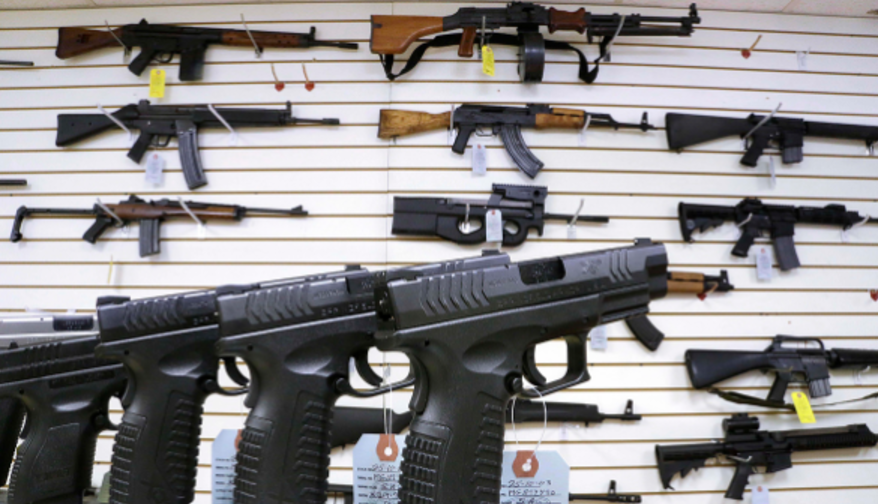Home // Homesteading
Prepping for the unexpected on the go: 10 must-haves for your glove box
06/21/2018 // Frances Bloomfield // Views
Tags: bugout, preparedness, preparedness and survival, prepper glove box, prepping, survival, survival tools

- Maps: GPS devices and smartphones are good and all, but these can run out of juice quickly when you use them too often. A map, on the other hand, doesn't need batteries or a charger to work. You just need to be able to read maps. But not just any will do. There are three types of maps that you should have with you, and these are:
- A detailed local map: Depending on where you live, it may be a town map or a city map. Either way, you should get your hands on the most detailed map of your home area available. Don't make the mistake of thinking that you know your area better than any map could. Natural or man-made disasters could block off the streets you're familiar with, so you may need to find alternate routes to safety.
- A regional topographic map: This should come right after your local map. You may need to avoid the roads if a major crisis has swept through your state. This means potentially crossing over mountains and cutting through rivers, which you need to take into consideration and plan around.
- Extended area road maps: You may come to a point where you have no other choice but to enter another state. If and when this happens, be sure that you have a map to guide you. Check out what states surround yours so you'll know what maps you'll need.
- A wrist compass: To go with your maps, wrist compasses are lightweight and reliable enough to serve as either your primary or secondary compass. Reading compasses can be a little trickier than making sense of a map, though, so make it a point to take some classes.
- A pocketknife: Get a camper pocketknife. At its most basic, it'll come equipped with a point blade, a can opener, an awl, and a combination slotted screwdriver or cap lifter. Newer models have more attachments with multiple functions, but even the traditional camper pocketknife will suffice. The point here is that you need to have something on you that can cut, open, and carve without breaking. (Related: What’s in YOUR bug out bag? 10 must-have multipurpose survival tools.)
- A fire starter: Take the hassle out of cooking food and staying warm by investing in a good fire starter. These little devices come in a wide array of shapes and sizes, but there are some qualities that should determine which one you pick. Ideally, a fire starter should be easy to operate, operational in any weather situation, and can get a fire going even with a minimal amount of kindling. Bright-colored fire starters are a bonus since they'll be easier to spot in your glove box.
- A headlamp: One huge advantage a headlamp has over other light sources is that it frees up your hands. It may not provide as much light as a handheld flashlight, but being able to utilize both of your hands while working is a huge benefit.
- A water purification straw: The perfect partner for your water pouch or water bottle. Whether you get water from a stream or a tap, you never know if it's home to dangerous microbes and harmful toxins. Water purification straws will help ensure that you don't find out by sacrificing your health.
- Pepper spray: A solid, non-lethal personal protection option. But rather than taking out any would-be attackers, pepper spray is more for stunning them so you have time to make a hasty exit. Don't forget to place it within immediate reach and don't let it become buried under all of your other glove box survival gear.
- Alcohol swabs: For cleaning up any cuts and scrapes, and for general hygienic purposes. Alcohol swabs can even be repurposed into fire starters when needed.
- Face masks: If you ever find yourself thrown into a scenario where the air becomes dangerous, a face mask can mean the difference between getting out of it and failing to do so. Don't bother with regular cotton masks, though; you can buy cotton face masks with replaceable filters for less than $15.
- Resealable zipper storage bags: These aren't just for keeping your food fresh. Resealable zipper storage bags can be used to keep small tools from getting wet and can even serve as makeshift water collection bags. Plus, they don't take up too much space so you can squirrel away a good handful of resealable zipper storage bags for various applications.
Visit Bugout.news to read up on more survival and preparedness must-haves.
Sources include:
Related Topics
bugout preparedness preparedness and survival prepper glove box prepping survival survival toolsLatest News
Related News
11/17/2023 / By Arsenio Toledo
11/03/2023 / By Olivia Cook
11/03/2023 / By Olivia Cook
11/02/2023 / By Ethan Huff
11/02/2023 / By Kevin Hughes
11/02/2023 / By Zoey Sky
Take Action:
Support Natural News by linking to this article from your website.
Permalink to this article:
Copy
Embed article link:
Copy
Reprinting this article:
Non-commercial use is permitted with credit to NaturalNews.com (including a clickable link).
Please contact us for more information.
Please contact us for more information.























